When it comes to affiliate marketing, Pinterest might not be the first platform that comes to mind. However, you’ll be surprised to learn that Pinterest drives 5% of all traffic to websites, making it a powerful tool for affiliate marketers.
With its unique combination of visual appeal and user demographics, Pinterest offers immense potential for promoting affiliate products and driving conversions.
In this ultimate guide to affiliate marketing on Pinterest, we’ll explore how you can leverage the platform’s features and tap into its vast user base to boost your affiliate earnings.
Whether you’re a seasoned affiliate marketer or just starting out, this guide will provide you with the strategies and insights you need to succeed on Pinterest.
Introduction to Pinterest Affiliate Marketing
The Versatility and Uniqueness of Pinterest
When it comes to social media platforms, Pinterest stands out as a unique and versatile platform that offers tremendous opportunities for affiliate marketers.
Unlike other social media platforms, Pinterest focuses primarily on visual content, making it the ideal platform for showcasing products, creating inspiring content, and engaging with a highly receptive audience.
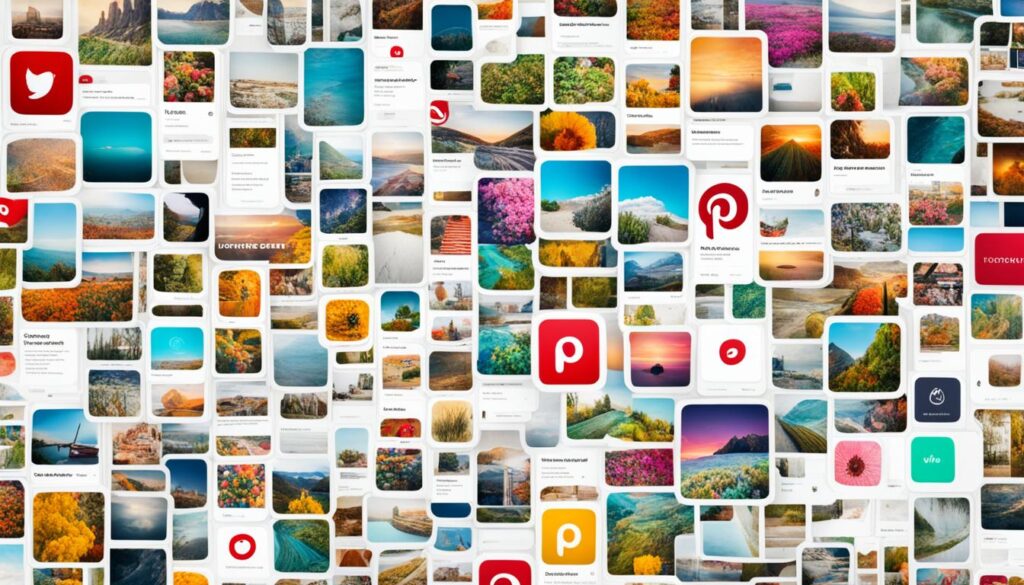
Pinterest allows you to create boards and pins that represent your brand, products, and interests, making it a visually appealing experience for users.
With its intuitive interface and visually-driven content, Pinterest offers a refreshing alternative to text-heavy platforms and enables affiliates to leverage the power of storytelling through visuals.
Why Pinterest Stands Out Among Social Media for Affiliates
As an affiliate marketer, using Pinterest can provide several advantages over other social media platforms. Firstly, Pinterest users are actively looking for inspiration and ideas, making them more receptive to product recommendations and affiliate promotions. This means that Pinterest has a highly engaged and motivated user base, ready to discover and engage with affiliate content.
Secondly, the evergreen nature of Pinterest content allows your affiliate pins to have a long lifespan, continually driving traffic and generating conversions over time. While posts on other social media platforms may quickly get buried in the newsfeed, Pinterest pins can resurface and gain traction long after their initial posting.
Lastly, Pinterest’s highly visual format allows affiliates to showcase products visually and create an emotional connection with their audience. By designing compelling and visually appealing pins, affiliates can capture the attention and interest of their target audience, driving click-throughs and conversions.
Understanding Pinterest’s User Demographics for Effective Targeting
Understanding the demographics of Pinterest users is crucial for effective targeting. Pinterest has a predominantly female user base, with approximately 70% of its users identifying as women. Furthermore, Pinterest users tend to be well-educated and have higher disposable incomes, making them an attractive audience for marketers promoting products in various niches.
Whether you’re targeting specific age groups, interests, or lifestyles, Pinterest’s user demographics can guide your affiliate marketing efforts. By tailoring your Pinterest content to resonate with your target audience, you can enhance engagement, increase conversions, and maximize the impact of your affiliate promotions.
| User Demographics | Percentage |
|---|---|
| Female users | 70% |
| Male users | 30% |
| Well-educated users | N/A |
| Higher disposable incomes | N/A |
Setting Up Your Pinterest Business Account
So, how to use pinterest for affiliate marketing? Creating a Pinterest business account is the first step towards leveraging the platform’s immense potential for affiliate marketing pinterest. With a business account, you gain access to valuable features and tools that can help you reach and engage with your target audience effectively.
Setting up your Pinterest business account is a straightforward process. Here’s a step-by-step guide to get you started:
- Create a Pinterest Business Account: Visit the Pinterest website and click on the “Join Pinterest” button. Choose the option to create a business account and follow the prompts to provide your business information.
- Verify Your Website: Verifying your website is crucial for establishing credibility and gaining access to advanced analytics features. Follow the verification steps provided by Pinterest to confirm ownership of your website.
- Set Up Your Business Profile: After creating your account, customize your business profile by adding a profile photo, a compelling description of your business, and a link to your website. Make sure to use relevant keywords in your profile description to optimize it for search engines.
- Create Relevant Boards: Organize your content by creating boards that align with your niche and target audience. Each board should have a specific theme and contain Pins that are relevant to your business.
- Add Pins: To start populating your boards, create captivating Pins that feature engaging visuals and compelling descriptions. You can use the “Create Pin” button on Pinterest or save Pins from your website using the Pinterest browser extension.

By following these steps, you’ll have a professional Pinterest business account up and running in no time. Remember to regularly update your profile and boards with fresh, high-quality content to keep your audience engaged and attract new followers to your account.
Creating a Pinterest Content Strategy
Having a well-defined content strategy is crucial for success in affiliate marketing on Pinterest. By implementing a strategic approach, you can effectively engage your target audience and maximize your reach on the platform.
In this section, we will explore key elements of a successful Pinterest content strategy, including identifying your niche and audience, utilizing different types of Pins for affiliate promotion, and planning and scheduling your content for maximum visibility through affiliate marketing Pinterest.
Identifying Your Niche and Audience on Pinterest
Before diving into creating content, it’s essential to understand your niche and target audience on Pinterest. Pinners have diverse interests, so finding your niche will enable you to tailor your content to a specific group of users who are more likely to engage with and convert through your affiliate links.
Conduct thorough research to identify popular topics and trends that align with your affiliate products. This will help you narrow down your niche and ensure that your content resonates with a receptive audience when affiliate marketing using pinterest.
Types of Pins and Their Uses in Affiliate Promotion
When using Pinterest for affiliate marketing, Pinterest offers a variety of Pin formats that can be utilized for affiliate promotion. Understanding the different types of Pins and how they can be effectively leveraged is key to driving traffic and conversions. Here are some popular types of Pins you can use:
- Product Pins: Showcase specific affiliate products with engaging visuals and compelling descriptions.
- Blog Post Pins: Create Pins that drive traffic to your affiliate blog posts or content-rich pages.
- Inspirational Pins: Curate inspiring content that relates to your niche and subtly promotes your affiliate products.
- Tutorial Pins: Create step-by-step tutorial Pins that demonstrate how your affiliate products can be used or that provide valuable tips and advice.
- Collage Pins: Combine multiple product images into one Pin to showcase a range of products or create themed collections.
Utilizing a mix of Pin types will allow you to diversify your content and capture the attention of different Pinterest users, increasing the chances of driving relevant traffic to your affiliate offers.
Content Planning and Scheduling for Maximum Reach
Consistency is key for how to affiliate market on Pinterest, and planning your content in advance will help you maintain a regular posting schedule and maximize your reach.
Firstly, create a content calendar outlining your upcoming Pins and their respective publishing dates. This will help you stay organized and ensure that you are consistently providing valuable content to your audience.
Take advantage of scheduling tools, such as Pinterest’s own scheduling feature or third-party platforms like Tailwind, to automate your posting. By scheduling Pins ahead of time, you can save valuable hours and maintain a consistent presence on the platform.

| Benefits of a Pinterest Content Strategy | Actions to Take |
|---|---|
| Increased visibility and reach on Pinterest | Identify your niche and target audience |
| Improved engagement and conversion rates | Create a mix of different Pin types |
| Consistent posting schedule and content organization | Plan and schedule your Pins in advance |
Implementing a solid Pinterest content strategy will greatly enhance your affiliate marketing efforts and help you achieve optimal results on the platform. By identifying your niche and target audience, utilizing various Pin types, and planning and scheduling your content effectively, you can significantly increase your visibility, engagement, and ultimately, your affiliate conversions.
Finding the Right Affiliate Programs
When it comes to monetizing your Pinterest presence, finding the right affiliate programs is crucial for how to become an affiliate marketer on Pinterest. Choosing the best affiliate programs that align with your niche and audience will help you maximize your earning potential and ensure that you’re promoting products that resonate with your followers.
So, how do you go about finding affiliate programs for Pinterest? Here are some steps to help you get started:
1. Research and Identify Relevant Affiliate Networks
Begin by researching and identifying affiliate networks that offer programs suitable for your niche. Look for networks with a good reputation, a wide range of products, and fair commission rates. Some popular affiliate networks to consider include:
- ShareASale
- Commission Junction
- Amazon Associates
- ClickBank
- Rakuten Advertising
2. Explore Brands and Merchants in Your Niche
Once you have a list of affiliate networks, explore the brands and merchants within your niche that are associated with these networks. Visit their websites, read about their products and services, and assess their suitability for your audience.
3. Evaluate Commission Structures and Cookie Durations
When selecting an affiliate program, pay attention to the commission structures and cookie durations offered. Commission structures determine how much you’ll earn per sale or action, while cookie durations dictate how long the affiliate link remains active and can earn you commissions.
4. Consider Product Relevance and Quality
Choose affiliate programs that offer products or services that are relevant to your Pinterest audience. Ensure that the products are of high quality, align with your brand, and provide value to your followers. This will help build trust and increase the likelihood of conversions.
5. Check for Affiliate Program Restrictions
Before joining an affiliate program, make sure to review their terms and conditions for any restrictions. Some programs may limit the types of content or promotional methods you can use. It’s important to comply with these guidelines to avoid any issues with your account.
By following these steps and being selective in your choice of affiliate programs, you can increase your chances of success in affiliate marketing on Pinterest. Remember, it’s not just about the number of programs you join, but rather the quality and relevance of the products you promote.

Understanding and Adhering to Pinterest’s Affiliate Guidelines
When participating in affiliate marketing through pinterest, it is crucial to understand and adhere to Pinterest’s affiliate guidelines. By following the rules and best practices, you can ensure a smooth and successful experience while avoiding any potential account suspension. This is the most important thing to know before considering how to start affiliate marketing on pinterest.
Key Rules for Affiliate Links on Pinterest
Pinterest has specific guidelines regarding the use of affiliate links. It is important to familiarize yourself with these rules to comply with the platform’s policies. Here are some key rules for how to do affiliate marketing on Pinterest:
- Avoid deceptive practices: Do not engage in any deceptive or misleading tactics when using affiliate links. Provide accurate and transparent information to your audience.
- Disclose your affiliate relationship: Proper disclosure is crucial when using affiliate links. Clearly indicate that the link is an affiliate link to maintain transparency with your audience.
- Avoid overposting affiliate content: Excessive posting of affiliate content can be perceived as spam. Strike a balance between affiliate content and other valuable Pins to provide a well-rounded experience for your audience.
- Respect copyright and intellectual property: Ensure that the images and content you use in your affiliate Pins comply with copyright laws and do not infringe on any intellectual property rights.
Navigating Proper Link Disclosure Practices
Proper disclosure of pinterest affiliate links is essential to build trust with your audience. When disclosing affiliate links on Pinterest, consider the following practices:
- Use clear and concise language: Clearly communicate the affiliate relationship in a way that your audience can easily understand.
- Place disclosure prominently: Make sure the disclosure is noticeable and placed in a location that is easily visible to your audience.
- Use appropriate disclosure hashtags: Incorporate disclosure hashtags like #ad or #affiliate to provide clear notice of the affiliate relationship.
- Disclosure in Pin descriptions: Include a disclosure statement in the Pin description to ensure transparency with your audience.
Minimizing the Risks of Account Suspension
To avoid the risk of account suspension on Pinterest, it is important to take proactive measures. Here are some tips to minimize the risks when affiliate marketing with Pinterest.
- Follow Pinterest’s guidelines: Stay up to date with Pinterest’s affiliate guidelines and ensure that your Pins comply with the platform’s policies.
- Create high-quality content: Focus on creating valuable, engaging, and original content that adds value to your audience. Avoid low-quality or spammy affiliate content.
- Monitor your analytics: Regularly review your analytics to track the performance of your Pins. This will help you identify any issues and make necessary adjustments.
- Engage with your audience: Build a genuine connection with your audience by responding to comments, addressing their concerns, and providing helpful information.

By understanding Pinterest’s affiliate guidelines, following the key rules for affiliate links, navigating proper link disclosure practices, and minimizing the risks of account suspension, you can ensure a successful and compliant affiliate marketing experience on Pinterest.
Crafting Effective Pins with Affiliate Links
Creating engaging Pins with affiliate links is crucial for maximizing the success of your affiliate marketing strategy on Pinterest. By crafting visually appealing and compelling Pins, you can capture the attention of Pinterest users and entice them to click on your affiliate links.
Here are some tips for crafting effective affiliate Pins on Pinterest:
- Choose eye-catching visuals: Use high-quality images that are relevant to your affiliate product or service. Images that stand out and evoke emotion are more likely to grab the attention of Pinterest users.
- Write compelling descriptions: Craft concise and persuasive descriptions that highlight the benefits and features of the affiliate product. Use keywords and descriptive language to entice users to learn more.
- Include a call-to-action: Encourage Pinterest users to take action by adding a clear and compelling call-to-action in your Pin description. This could be as simple as asking users to click for more information or to make a purchase.
- Strategically place affiliate links: Incorporate your affiliate links strategically within your Pins. Place them in a natural and non-spammy way to maintain authenticity and increase click-through rates.
- Experiment with different Pin formats: Pinterest offers various Pin formats, including standard Pins, carousel Pins, and video Pins. Test different formats to see which ones resonate most with your audience and drive the most clicks.

Remember, the key to success with affiliate Pins on Pinterest is to create visually appealing content that captivates users and encourages them to take action. Experiment with different strategies and monitor the performance of your Pins to optimize your affiliate marketing efforts on Pinterest.
By leveraging these tips and techniques, you can create engaging Pins with affiliate links that drive traffic, generate leads, and ultimately increase your affiliate earnings on Pinterest.
Pinterest Affiliate Marketing
In order to maximize the visibility and reach of your affiliate content on Pinterest, it’s important to optimize your Pinterest profile for search engines. By incorporating SEO best practices and conducting keyword research for your affiliate pins and board descriptions, you can increase your chances of showing up in relevant search results.
Optimizing your Pinterest profile for SEO starts with ensuring that your profile name, username, and bio contain keywords related to your niche and the products or services you’re promoting. This helps search engines understand the relevance of your profile to specific search queries.
When it comes to keyword research for your affiliate pins, it’s essential to choose keywords that accurately represent the content of your pins and align with the interests of your target audience. This can be done by conducting keyword research using tools like Pinterest Trends and Google Keyword Planner.
Additionally, implementing SEO best practices in your pin creation can significantly impact the visibility of your affiliate content. This involves optimizing your pin titles, descriptions, and alt text by incorporating relevant keywords. Including these keywords can improve the chances of your pins appearing in both Pinterest search results and general search engine results.
It’s also important to consider the readability and engagement of your pin descriptions. Writing compelling descriptions that entice users to click through and learn more about the product or service you’re promoting can increase the click-through rate and ultimately drive more traffic to your affiliate links.
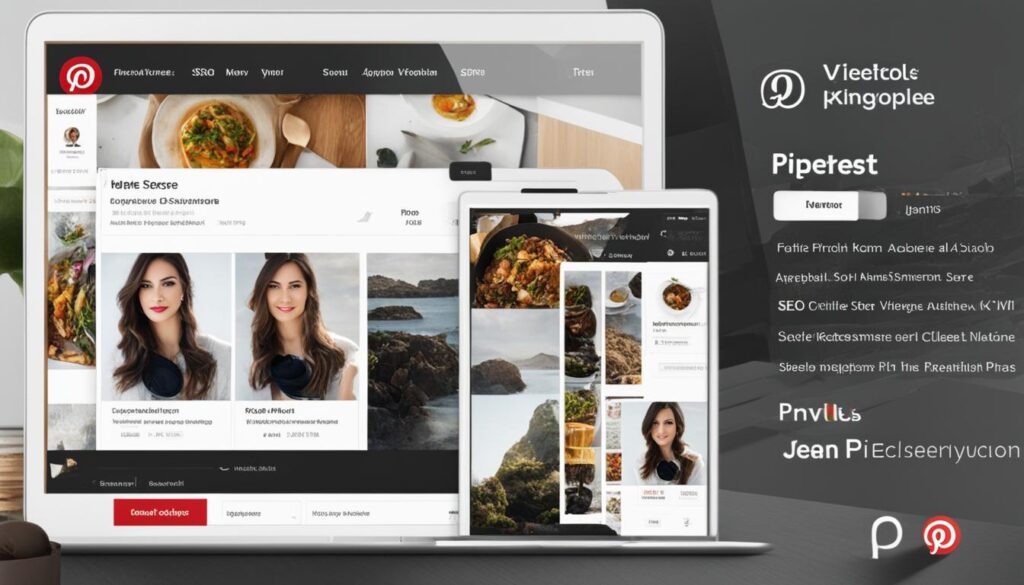
By optimizing your Pinterest profile for SEO, conducting keyword research for your affiliate pins and board descriptions, and implementing SEO best practices in your pin creation, you can enhance the visibility and discoverability of your affiliate content on Pinterest.
Leveraging Rich Pins for Enhanced Visibility
Rich Pins are a powerful tool that can greatly enhance your visibility and increase engagement with your affiliate marketing efforts on Pinterest. By using rich Pins, you can provide additional information and context to your pins, making them more attractive and enticing for users to click and explore further.
Rich Pins offer a variety of formats, including product pins, recipe pins, article pins, and more. Each format is optimized to showcase specific information that is relevant to the pin, such as pricing, availability, ingredients, and instructions. By utilizing these rich Pin formats, you can provide valuable details and make it easier for users to take action.
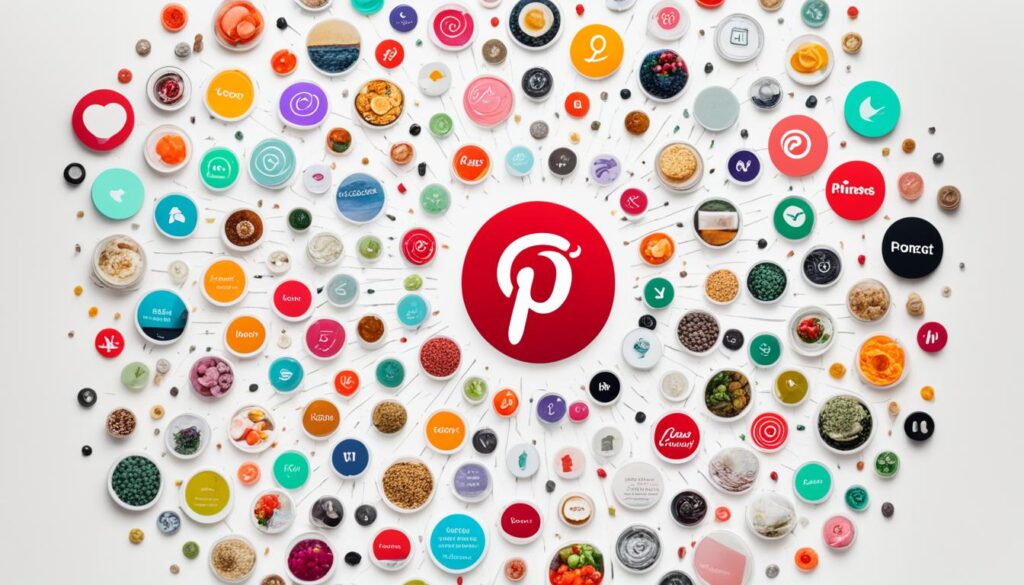
One of the key benefits of rich Pins is their ability to stand out in the Pinterest feed. With bold titles, eye-catching images, and clear information, rich Pins capture attention and entice users to engage with your content. This increased visibility can lead to higher click-through rates, driving more traffic to your affiliate offers and increasing your chances of earning commissions.
Additionally, rich Pins are more likely to be re-pinned and shared by users, further expanding your reach and exposing your affiliate content to a wider audience. The additional information provided by rich Pins also helps users make informed decisions, increasing the likelihood of conversion and generating more revenue for your affiliate marketing efforts.
To start leveraging rich Pins, you will need to apply to Pinterest for access to their rich Pin features. Once approved, you can add the necessary code to your website or use a Pinterest-approved third-party plugin to enable rich Pins for your content. From there, you can optimize your pins with relevant keywords, compelling descriptions, and visually appealing images to maximize their impact.
By utilizing rich Pins in your affiliate marketing strategy on Pinterest, you can enhance your visibility, attract more users, and increase your chances of success. Take advantage of the unique features offered by rich Pins to make your affiliate content stand out and drive meaningful engagement with your audience.
Measuring Success: Analytics and Tracking
When it comes to affiliate marketing on Pinterest, understanding your performance is crucial to optimizing your strategies and driving better results. By analyzing success with Pinterest analytics and tracking important performance metrics, you can gain valuable insights into your affiliate campaigns and make data-driven decisions to improve your marketing efforts.
Understanding Pinterest Analytics for Affiliate Campaigns
Pinterest provides powerful analytics tools that give you a comprehensive view of how your affiliate campaigns are performing. With Pinterest analytics, you can track the reach, engagement, and click-through rates of your Pins, as well as gain insights into your audience demographics and interests.
By delving into these analytics, you can identify which Pins and boards are generating the most engagement and clicks, helping you understand what type of content resonates with your audience. This information allows you to refine your affiliate marketing strategies and focus on creating more of the content that drives results.
Key Performance Metrics to Monitor
Tracking the right performance metrics is essential for measuring the success of your Pinterest affiliate marketing efforts. Here are some important metrics to keep an eye on:
- Impressions: The number of times your Pins have been seen by users.
- Engagements: The total number of interactions with your Pins, such as saves, clicks, and comments.
- Click-through Rate (CTR): The percentage of users who clicked on your Pin after seeing it.
- Conversion Rate: The percentage of users who completed a desired action, such as making a purchase, after clicking on your affiliate link.
- Revenue: The amount of money generated from your affiliate marketing efforts.
By regularly monitoring these metrics, you can identify trends, spot areas for improvement, and measure the overall effectiveness of your affiliate campaigns.
Using Data to Refine Your Affiliate Marketing Strategies
Analyzing the data from your Pinterest analytics can provide valuable insights that you can use to refine your affiliate marketing strategies. By identifying which Pins and boards perform the best, you can optimize your content creation, targeting, and promotion efforts.
For example, if you find that Pins with certain keywords or visuals generate higher engagement and click-through rates, you can incorporate those elements into your future Pins. Additionally, understanding your audience demographics can help you tailor your content to their interests and preferences, maximizing the chances of driving conversions.
Ultimately, using data to inform your decisions and refine your strategies is essential for achieving success in affiliate marketing on Pinterest. Continuously analyzing, tracking, and optimizing your campaigns based on Pinterest analytics can help you improve your performance and drive better results in your affiliate marketing endeavors.
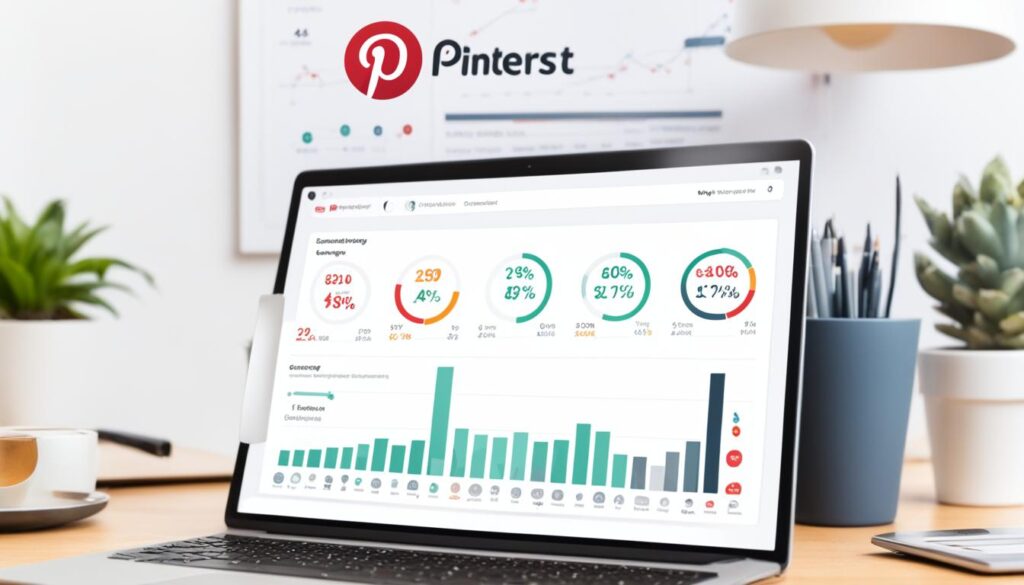
Advanced Marketing Strategies for Pinterest Affiliates
Now that you have mastered the basics of affiliate marketing on Pinterest, it’s time to take your strategies to the next level. By implementing advanced marketing techniques on Pinterest, you can maximize your affiliate earnings and achieve even greater success. Here are some advanced strategies to consider:
- Utilize Video Pins: Video content has become increasingly popular on Pinterest, making it an effective way to engage with your audience. Create compelling videos that promote your affiliate products and include relevant keywords in the descriptions and titles to optimize their visibility.
- Collaborate with Influencers: Partnering with influential users on Pinterest can significantly expand your reach and attract a wider audience. Identify relevant influencers in your niche and reach out to them for collaboration opportunities. Leverage their expertise and following to promote your affiliate products.
- Create Long-Form Pins: Long-form Pins allow you to provide more detailed information about your affiliate products. Craft visually appealing images and combine them with in-depth descriptions that highlight the benefits and features of the products. Long-form Pins tend to perform well and attract more clicks and conversions.
- Explore Pinterest SEO: Optimize your Pins and boards for search engines by conducting keyword research and incorporating relevant keywords in your Pin descriptions, board titles, and board descriptions. This will improve the visibility of your content and attract organic traffic.
- Run Promoted Pins Campaigns: Promoted Pins offer a powerful way to expand your reach and target specific demographics on Pinterest. Invest in paid advertising to reach a larger audience and drive more traffic to your affiliate products. Monitor the performance of your campaigns and adjust your targeting and bidding strategies accordingly.
By implementing these advanced marketing strategies, you can unlock the full potential of Pinterest affiliate marketing. Remember to track your performance, analyze data, and continuously refine your strategies based on the insights you gather. Stay up-to-date with the latest trends and features on Pinterest to ensure that you are always ahead of the game.

Balancing Organic and Paid Promotions
In order to maximize the success of your affiliate marketing efforts on Pinterest, it’s important to strike a balance between organic and paid promotions. While organic reach allows you to tap into the platform’s vast user base without any cost, paid advertising offers targeted exposure and the ability to boost high-performing affiliate Pins. By utilizing both strategies effectively, you can reach a wider audience, increase engagement, and drive more conversions.
Comparing Organic Reach vs. Paid Advertising on Pinterest
Organic reach on Pinterest refers to the number of users who see your Pins through unpaid means, such as search results, home feed, or category feeds. It relies on the quality of your content, keywords, and engagement from other users. While organic reach can be substantial, it’s important to understand that it may take time and effort to build a significant following and generate consistent traffic.
On the other hand, paid advertising offers a more immediate and targeted approach to promoting your affiliate content. By investing in promoted Pins, you can reach a larger audience and increase your visibility across specific demographics, interests, and keywords. This enables you to put your affiliate Pins in front of users who are more likely to engage with and convert through your offers.
Strategically Boosting High-Performing Affiliate Pins
When it comes to boosting high-performing affiliate Pins, you should analyze your organic Pins’ performance metrics, such as impressions, clicks, and conversions, to identify the Pins that are resonating with your audience. These are the Pins that have the potential to perform even better with a strategic boost.
Consider allocating a portion of your budget to promote these high-performing Pins, as they have already shown promise in attracting engagement and driving conversions. By boosting their visibility through paid advertising, you can amplify their reach and further capitalize on their success.
Allocating Budget for Promoted Pins with Affiliate Offers
When budgeting for promoted Pins with affiliate offers, it’s important to consider your overall marketing objectives and allocate your budget accordingly. Determine how much you are willing to invest in paid advertising based on your expected return on investment (ROI).
Start by setting aside a portion of your marketing budget specifically for promoting Pins with affiliate offers. This will ensure that you have a dedicated budget for paid advertising and can effectively track its impact on your affiliate marketing efforts. Monitor the performance of your paid promotions and adjust your budget as needed to optimize results and drive higher conversions.
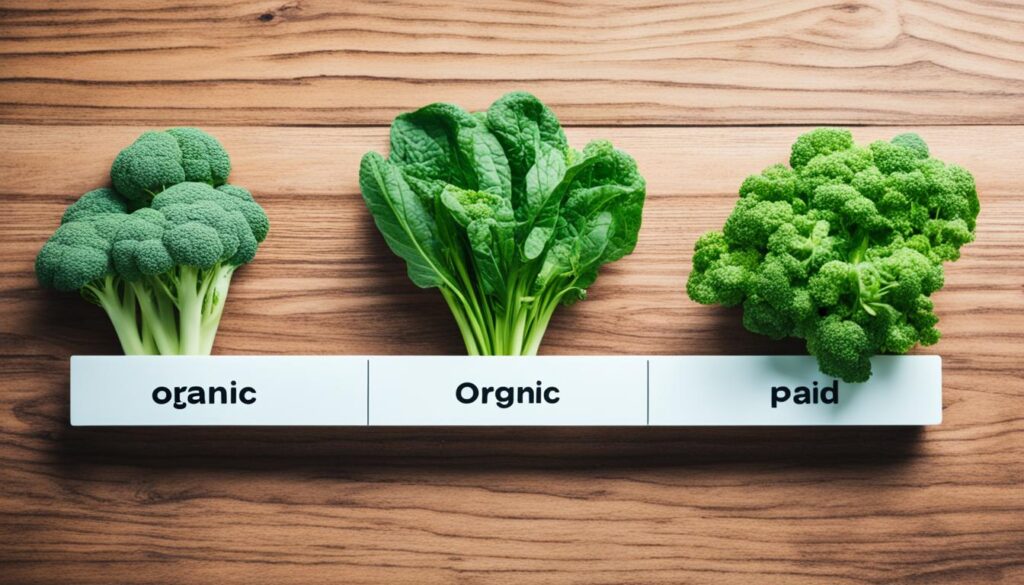
By balancing organic and paid promotions on Pinterest and strategically boosting high-performing affiliate Pins, you can maximize your reach, engagement, and conversions. Additionally, allocating a budget for promoted Pins with affiliate offers allows you to effectively track your ROI and make data-driven decisions to optimize your Pinterest affiliate marketing strategy.
Staying Updated with Pinterest’s Evolving Features
As an affiliate marketer on Pinterest, it’s crucial to stay updated with the platform’s evolving features to maximize your success. Pinterest regularly introduces new tools and updates that can enhance your marketing strategies and drive results. By keeping up with these changes, you’ll be able to leverage the latest features and stay ahead of the competition.
One effective way to stay updated is by following Pinterest’s official blog and social media channels. They often share announcements about new features, improvements, and best practices to help you make the most of your affiliate marketing efforts. Additionally, you can join Pinterest marketing communities and forums to connect with other marketers and learn from their experiences.
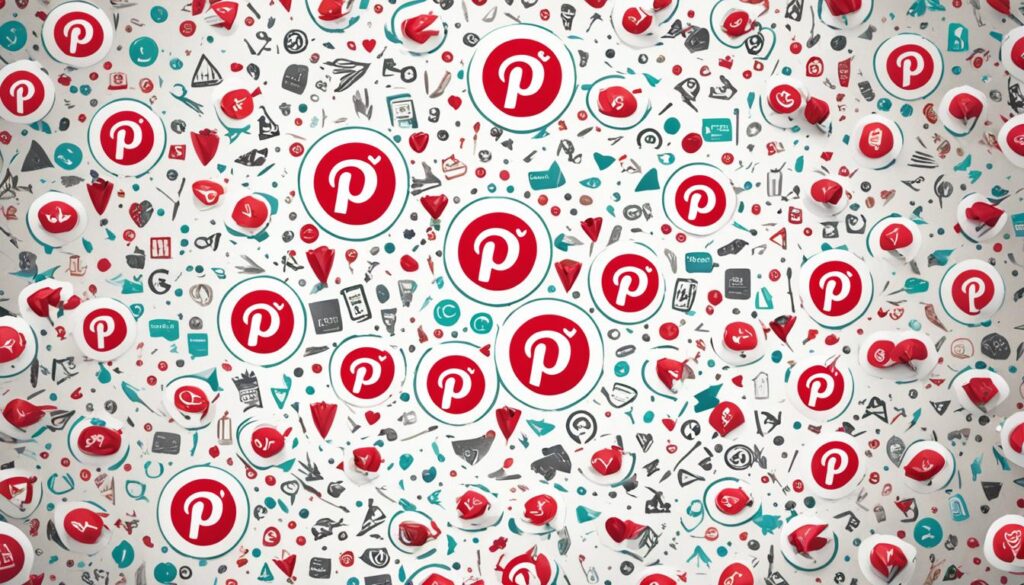
Another useful resource is Pinterest’s Help Center. It provides comprehensive documentation and guides on how to use different features, troubleshoot issues, and stay compliant with their guidelines. Bookmarking the Help Center and regularly checking for updates will ensure you’re aware of any changes that may impact your affiliate marketing strategy.
Lastly, attending webinars and online workshops hosted by Pinterest or industry experts can provide valuable insights and tips for optimizing your affiliate marketing efforts. These events often cover topics like new features, best practices, and success stories from top marketers. By participating in these sessions, you can gain firsthand knowledge and stay at the forefront of Pinterest’s ever-evolving landscape.
In conclusion, staying updated with Pinterest’s evolving features is essential for successful affiliate marketing on the platform. By following official channels, leveraging resources like the Help Center, and participating in industry events, you’ll ensure that your strategies remain effective and aligned with the latest advancements. By adapting to changes and embracing new features, you’ll have a competitive edge and continue to drive results with your Pinterest affiliate marketing campaigns.
Conclusion
As we wrap up this ultimate guide to affiliate marketing on Pinterest, it is clear that Pinterest offers unique advantages for affiliates looking to expand their reach and maximize their earnings. By understanding the versatility and user demographics of Pinterest, you can effectively target your audience and create a tailored content strategy that resonates with them.
When setting up your Pinterest business account, be sure to optimize your profile for search engines and follow Pinterest’s affiliate guidelines to avoid any potential account suspension. Craft compelling pins with affiliate links, utilizing rich pins for enhanced visibility, and implement SEO best practices to increase your chances of success on the platform.
Remember to measure your success by analyzing Pinterest analytics and using the data to refine your affiliate marketing strategies. Consider advanced marketing strategies and strike a balance between organic and paid promotions to maximize your affiliate earnings. Lastly, stay updated with Pinterest’s evolving features to stay ahead of the competition and continue to grow your affiliate business on the platform.

